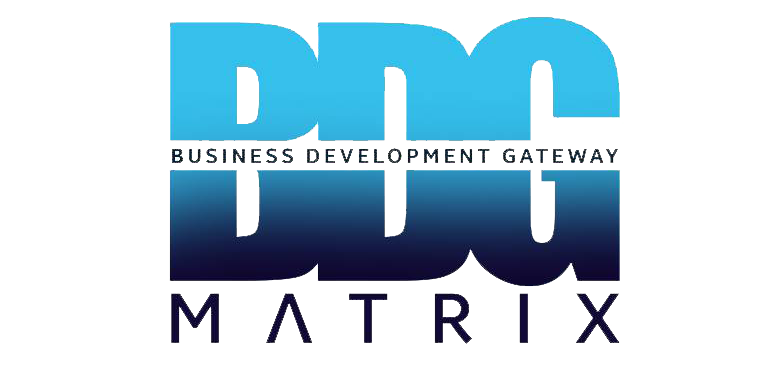In today’s competitive business environment, a strong workplace culture is a cornerstone of long-term success. A winning culture drives employee engagement, enhances productivity, and helps organizations attract and retain top talent. According to a 2023 Gallup study, companies with high employee engagement achieve 23% higher profitability and 66% lower turnover rates. For businesses aiming to thrive, cultivating a culture that aligns with organizational goals and resonates with employees is essential. This article outlines eight actionable strategies, tailored to local contexts, for building a workplace culture that fosters success and sustainability.
Understanding Workplace Culture
Workplace culture encompasses the shared values, beliefs, behaviours, and norms that shape how employees interact and collaborate within an organization. It’s the invisible force that influences decision making, morale, and performance. A winning workplace culture promotes collaboration, innovation, and a sense of purpose while reflecting the organization’s mission and the needs of its workforce. Below are eight strategies to create a thriving culture that drives long-term success.
1. Define and Embed Locally Relevant Core Values
Core values form the foundation of a strong workplace culture, guiding behaviour and aligning with the organization’s mission. These values should resonate with employees and reflect the community’s ethos.
Actionable Steps:
- Involve Employees: Engage diverse teams in defining values to ensure buy in and relevance. For example, values like community, respect, or resilience can reflect local priorities.
- Make Values Actionable: Translate values into specific behaviours. For instance, if “integrity” is a value, define it as “transparent communication with colleagues and clients.”
- Communicate Consistently: Share values through onboarding, team meetings, and internal communications, using accessible platforms like group chats or local languages.
Example: A leading telecom company embeds a “Can-Do” value, encouraging employees to innovate despite challenges, contributing to its recognition as a top employer in 2024.
2. Foster Inclusive Leadership
Leaders shape culture through their actions and decisions. Inclusive leadership where leaders empower employees, respect diversity, and model desired behaviours creates a collaborative and trusting environment.
Actionable Steps:
- Lead by Example: Leaders should embody values, such as transparency by openly sharing information or admitting mistakes.
- Empower Employees: Delegate decision making to foster ownership, especially among younger workers, who form a significant portion of the workforce.
- Train for Diversity: Equip managers to handle diverse teams, addressing differences in background, gender, or perspectives.
Case Study: A tech talent firm trains leaders to foster inclusivity across its offices, resulting in a 15% increase in employee satisfaction since 2023.
3. Prioritize Employee Well-Being
Economic pressures and demanding work environments make employee well-being a priority. A culture that supports physical, mental, and financial health boosts loyalty and productivity.
Actionable Steps:
- Offer Tailored Benefits: Provide benefits like transport allowances, health insurance, or subsidized meals to address local challenges.
- Support Mental Health: Partner with telehealth platforms or local organizations to offer affordable mental health resources.
- Flexible Work Options: Implement hybrid or flexible schedules to accommodate commuting challenges or family responsibilities.
Statistic: A 2024 survey found that 68% of employees are more likely to stay with companies offering well-being benefits, reducing turnover costs.
4. Encourage Open Communication
Transparent communication builds trust and fosters a sense of belonging. Employees should feel safe to share ideas, feedback, or concerns without fear.
Actionable Steps:
- Create Feedback Channels: Use anonymous surveys, town halls, or digital platforms to gather input.
- Act on Feedback: Demonstrate that feedback matters by implementing changes. For example, a global software company replaced rigid performance reviews with flexible check-ins after employee input, improving engagement by 10%.
- Train for Active Listening: Equip managers to listen empathetically and respond constructively.
Case Study: A marketing tech firm emphasizes transparency by sharing financial data and strategy updates, fostering trust and alignment across teams.
5. Recognize and Reward Achievements
Recognition motivates employees and reinforces positive behaviours. Acknowledging contributions strengthens loyalty and builds a sense of community.
Actionable Steps:
- Personalized Recognition: Tailor rewards to individual preferences, such as public praise, bonuses, or extra time off.
- Celebrate Milestones: Recognize work anniversaries, project completions, or personal achievements.
- Use Technology: Platforms like Bonusly enable peer-to-peer recognition, enhancing a culture of appreciation.
Statistic: A 2023 Deloitte study found that organizations with robust recognition programs have 31% lower voluntary turnover rates.
6. Invest in Professional Development
A culture that prioritizes growth attracts ambitious talent and keeps employees engaged. Offering learning opportunities signals investment in employees’ futures.
Actionable Steps:
- Offer Training Programs: Provide access to workshops, certifications, or online platforms like LinkedIn Learning.
- Create Career Pathways: Develop clear promotion tracks and mentorship programs to support long-term growth.
- Encourage Skill-Sharing: Foster peer-to-peer learning through internal knowledge-sharing sessions.
Case Study: A professional services firm’s learning academy offers tailored development programs, improving retention by 20% since 2021.
7. Promote Diversity, Equity, and Inclusion (DEI)
A diverse and inclusive workplace drives innovation and reflects the broader market. Employees thrive in environments where they feel respected and valued.
Actionable Steps:
- Set DEI Goals: Establish measurable targets for diversity in hiring, promotions, and leadership roles.
- Provide DEI Training: Educate employees on unconscious bias and inclusive practices.
- Create Safe Spaces: Support employee resource groups to foster belonging for underrepresented groups.
Statistic: A 2024 BCG study showed that companies with strong diversity generate 19% higher innovation revenues.
8. Adapt to Change
A winning culture evolves with workforce needs and industry trends. Flexibility ensures relevance and resilience in a dynamic environment.
Actionable Steps:
- Monitor Trends: Stay informed about employee expectations, such as preferences for hybrid work or purpose-driven roles.
- Solicit Feedback: Use annual culture audits or surveys to identify areas for improvement.
- Pilot Initiatives: Test new policies, like flexible hours, and scale successful ones.
Example: During global disruptions, a tech company adapted its culture by prioritizing virtual collaboration tools and well-being resources, maintaining engagement.
Measuring Success
To ensure the culture drives success, track key metrics:
- Employee Engagement: Measure satisfaction via surveys (e.g., eNPS).
- Turnover Rates: Monitor voluntary turnover to assess retention.
- Productivity Metrics: Track project completion rates or output.
- Diversity Metrics: Measure progress toward DEI goals.
- Employee Feedback: Analyze qualitative input from surveys or exit interviews.
Challenges and Solutions
Challenges like resistance to change or inconsistent leadership can hinder culture-building. To address them:
- Overcome Resistance: Communicate benefits and involve employees in changes.
- Ensure Consistency: Align leaders through training and accountability.
- Align Values with Actions: Audit policies to ensure they reflect stated values.
Conclusion
A winning workplace culture is a competitive advantage, fostering engagement, innovation, and resilience. By defining relevant values, fostering inclusive leadership, prioritizing well-being, and adapting to change, organizations can create environments where employees thrive and contribute to long-term success. Companies like those in telecom and tech demonstrate that a strong culture drives tangible results, positioning businesses for sustainable growth.
To begin, assess your current culture, engage employees in defining values, and implement one or two strategies from this guide. For tailored consulting on building your workplace culture, contact BDG Matrix at info@bdgmatrix.com to explore how we can empower your organization’s success.




